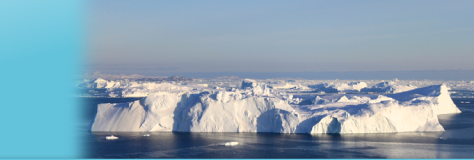From 2016, JUPAS applicants could become a ESSC student at CUHK through one of the following two paths:
Global environmental change, air and water pollution, natural hazards, energy resources, and nuclear waste disposal are all critical issues of public concern. In recent decades, the scientific community has realised that tackling these complex scientific issues requires a fundamental understanding of both the dynamics of the Earth as an interrelated system comprising the atmosphere, biosphere, geosphere and hydrosphere and the human impacts on that system. Such an understanding hinges on scientific research that integrates traditional disciplines such as geology, meteorology and oceanography. It also requires the development of a curriculum designed to educate and prepare a new generation of students in the interdisciplinary framework of Earth System Science (ESSC).
| |
|
Units |
ESSC |
YATM_N |
YGEO_N |
| Year 1 - 2 |
Introductory Courses |
ESSC1000 Exploring the Earth System 
探索地球系统
The course provides an interdisciplinary platform for students to navigate the Earth System Science curriculum. Natural phenomena associated with the atmosphere, hydrosphere, geosphere, cryosphere, and biosphere will be described, and concepts related to their dynamics and anthropogenic impacts will be introduced. The connection with global environmental change, natural hazards and the water-energy-food nexus will be highlighted. In addition to attending lectures, students will undertake visits to Museum of Climate Change and a geological field trip.
|
1 |
E |
E |
E |
ESSC2010 Solid Earth Dynamics 
固體地球動力學
This course presents an integrated introduction to the solid earth system stressing the geological, chemical, physical, and biological interactions among the lithosphere, hydrosphere and cryosphere. The course applies basic scientific and mathematical concepts to explain the history and behaviour of the solid earth system. Geophysical and geochemical techniques for probing the interior of the earth are reviewed. Plate tectonics is introduced as a unifying theme to understand geodynamic processes. The course includes discussions of topics that are relevant to society, resources and sustainability, such as the physical and chemical basis of natural hazards (earthquakes, tsunami, landslides) and their mitigation, and the impact of geological processes on the global environment.
|
3 |
R |
R |
R |
ESSC2020 Climate System Dynamics
氣候系統動力學
This course presents an integrated introduction to the climate system, stressing the dynamics of the atmosphere and its physical and chemical interactions with the hydrosphere, biosphere and geosphere. The course applies basic scientific and mathematical principles to explain the history, current state and future projection of weather and climate, natural hazards (e.g., typhoons, floods), and global climate change in the context of natural variability and anthropogenic influence. Topics include Earth’s energy balance, climate feedback, convection and clouds, general circulation of the atmosphere and ocean, biogeochemistry and global carbon cycle, roles of vegetation and ecosystems, and historical and future climate change. Student taking this course are expected to have taken PHYS1111, CHEM1070 and MATH1010 or equivalent.
|
3 |
R |
R |
R |
ESSC2030 Introduction to Computational Earth System Science
地球系統科學的基礎計算
This course covers basic computation skills which are important to modern Earth System Science research and data analysis. Topics include the basic Python language syntax; programming flow control; usage of functions; file input/output modules; data visualisation; atmospheric science applications; geoscience applications and basic machine learning applications in earth system science. Python 3 will be used throughout the course. Examples and tutorials will be based on various problems in Earth System Science using actual observational or in-situ data.
|
3 |
E |
E |
E |
ESSC2110 Geoscience Field Study 
地球科學野外考察
ESSC2110 is a fundamental field-based course introducing elementary concepts of past Earth’s processes and environmental changes. It also covers important aspects of plate tectonics, different rock types, geological deformation, geomorphology and environmental changes, natural hazards and human impacts. The principal goal of this course is to let students understand how the present geological records and landforms reveal the past tectonic movements and affect the human urban planning. Students are trained to observe, describe and discuss field features, with the help of field tools (e.g. compasses-clinometer and GPS receiver). Basic skills of field techniques, interpreting geologic maps and making field notes are introduced to assist students acquiring field data and discuss possible geologic processes. A field report from each group is required to summarize the field study logically. Field locations of this course may change from year to year. All students are welcome, but priority will be given to students who have taken ESSC1000.
|
1 |
E |
|
E |
ESSC2120 Integrated Geoscience Field Study 
綜合地球科學野外考察
Field study of current landform and geological features is the key to reveal past Earth’s processes and environmental changes. This also provides data for further studies on natural hazards. ESSC2120 is a fundamental level, field-based course of the Earth System Science Programme. It covers important aspects of atmospheric sciences, plate tectonics, volcanoes, deformation structures, sedimentology, coastal features, earthquakes and associated present-day infrastructures. The principal goal of this course is to let students study major atmospheric sciences, geological features and understand how tectonic movement and atmospheric phenomenon contributes to the current different landforms, disasters and urban planning. Students are trained to observe, describe and discuss field features. Basic skills of using field tools (e.g. compasses-clinometer), studying geologic maps and making field notes are introduced to help students acquire field data and analyze possible atmospheric phenomenon and geologic processes. A field report is required to summarize the field study logically. The field location and term of offer of this course may change from year to year. Due to limited quota, priority will be given to students who have taken ESSC2010 and will enroll in ESSC3110.
|
2 |
E |
E |
E |
ESSC2130 Fundamental Geoscience Fieldwork
基礎地球科學野外實習
Field study of current landform and geological features is the key to reveal past Earth’s processes and environmental changes. This also provides data for further studies on natural hazards. ESSC2130 is a fundamental level, field-based course of the Earth System Science Programme. It covers important aspects of atmospheric sciences, plate tectonics, volcanoes, deformation structures, sedimentology, coastal features, earthquakes and associated present-day infrastructures. The principal goal of this course is to let students study major atmospheric sciences, geological features and understand how tectonic movement and atmospheric phenomenon contribute to the current different landforms, disasters and urban planning. Students are trained to observe, describe and discuss field features. Basic skills of using field tools (e.g. compasses-clinometer), studying geologic maps and making field notes are introduced to help students acquire field data and analyze possible atmospheric phenomenon and geologic processes. A field report is required to summarize the field study logically. The field location and term of offer of this course may change from year to year. Due to limited quota, priority will be given to students who have taken ESSC2010 and passed the pre-enrolment quiz.
|
3 |
E |
E |
E |
ESSC2600 Biosphere, Climate and the Environment
生物圈、氣候與環境
This course introduces basic concepts of the biosphere with a focus on its relationships with the Earth system and global environmental change. Topics include: ecosystem ecology; global biogeochemical cycles, climate and the roles of different life forms; evolution of life throughout Earth history; human perturbations of carbon and nutrient cycles; impacts of agriculture and deforestation; ocean acidification and eutrophication; responses and evolution of terrestrial and marine ecosystems and biodiversity under global climate change. Students are recommended to take ESSC2600 and MBTE2010 simultaneously.
|
1 |
E |
E |
E |
ESSC2800 Introduction to Environmental Engineering
環境工程導論
This is a multidisciplinary course introducing the fundamental physical, chemical and biological principles necessary for understanding the natural and built environments, with an emphasis on reliable water and food supplies, pollution mitigation, waste management, energy resources, climate change, and sustainable development. Examples of engineering solutions to tackle some of these resource and environmental issues are presented. Field trips are included to illustrate interesting case studies. Topics include: conservation principles for mass, energy and momentum in the environmental systems; basic environmental chemistry, hydrology and ecology; risk assessment; and basic principles of water resource engineering, solid waste treatment, noise pollution, air pollution control, climate change adaptation and mitigation, and the interplay between energy consumption and the environment.
|
3 |
E |
E |
E |
| Year 2 - 4 |
Intermediate-Level Courses |
ESSC3010 Continuum Mechanics
連續介質力學
This course presents the fundamentals of continuum mechanics illustrated with earth system science applications. Background materials on matrices, vectors and differential operators are first reviewed. The following topics will be covered: tensors and their properties; stress and strain; constitutive equations for Hookean elastic solid and Newtonian viscous fluid; mechanical properties and rheology of geomaterials; Eulerian and Lagrangian kinematics; momentum equations for fluids in a rotating frame; vorticity and divergence; geostrophic balance; boundary layer dynamics; applications in geomechanics, seismology, atmospheric dynamics, and oceanography.
|
3 |
E |
E |
E |
ESSC3020 Analytic Methods in Earth and Environmental Sciences
地球與環境科學的分析方法
The course provides a survey of various analytical techniques commonly employed in solving problems encountered in earth and environmental sciences. Typical examples include heat conduction on earth surface, seismic and ocean waves, air pollution, geodynamics, and atmospheric dynamics.
|
3 |
E |
E |
E |
ESSC3100 Structural Geology 
構造地質學
This course is an important part of the core Earth System Sciences Curriculum. It introduces the processes and products of rock deformation in three dimensions, ranging from micro- (micron) to macro- (kilometer) scales. It discusses geometries and mechanism of faults, folds, structural features of igneous, sedimentary and metamorphic rocks, and superposed deformations and introduces regional deformational history and tectonics. Structural geology in the field of resource exploration (petroleum and mineral deposits) is also introduced. Class lectures are supplemented by lab exercise and demonstrations as well as field trips to local or overseas outcrops.
|
3 |
E |
E |
R |
ESSC3120 Physics of the Earth
地球物理
This course focuses on the concepts of the physics of the Earth to understand how the solid Earth works. Since 1960s, plate tectonics has been developed to explain observations on Earth such as mountain building, occurrence of earthquakes and volcanoes, as well as deposition of natural resources. The discovery of plate tectonics requires understanding of geophysical methods, which will be covered in this course. The topics covered include the Earth’s gravitational and magnetic fields, earthquake seismology, internal structure of the Earth, thermal and electrical properties, as well as geodynamics. Methods of geophysical survey will also be introduced.
|
3 |
E |
E |
R |
ESSC3200 Atmospheric Dynamics
大氣動力學
This course introduces observations of and physical principles governing the circulation of the Earth’s atmosphere in relation to weather and climate. The topics covered include atmospheric composition and structure, convection, fundamentals of atmospheric motions. and the basic principles for weather and climate modeling. Physical principles covered include basic conservation laws, balanced flows, atmospheric thermodynamics, circulation and vorticity, atmospheric waves, and theories for various weather systems.
|
3 |
E |
R |
E |
ESSC3220 Atmospheric Chemistry
大氣化學
This course introduces the physical and chemical processes determining the composition for the atmosphere and its implications for climate, ecosystems, air pollution and human welfare. Topics covered include atmospheric structure, atmospheric chemistry models, atmospheric transport, chemical kinetics, stratospheric and tropospheric chemistry, chemistry of aerosols, biogeochemical cycles, as well as critical environmental issues including stratospheric ozone depletion, acid rain, photochemical smog, and climate change.
|
3 |
E |
R |
E |
ESSC3300 Ocean and Climate
海洋與氣候
This course describes the physical characteristics of the ocean, the observed mean ocean circulation, and explains the latter’s governing dynamical principles. Related biological and chemical processes are introduced. Climate and climate variability, as well as the role played by the ocean are also described. Topics include wind-driven circulation, thermohaline circulation, inertial motions and tides, El Niño-Southern Oscillation, and the roles of the ocean in climate and climate variability.
|
3 |
E |
R |
E |
ESSC3320 Hydrogeology
水文地質學
This course introduces the physical and chemical principles of hydrogeology. Concepts of surface and groundwater hydrology, as well as quantitative modelling of groundwater flow and contaminant transport are covered. Special topics on the coupling of hydrologic and geologic processes will also be addressed, with examples from tectonics, petroleum geology, geothermics, and global change.
|
3 |
E |
E |
E |
ESSC3600 Ecosystems and Climate
生態系統與氣候
This course introduces the physical, chemical and biological principles governing the functioning of terrestrial and marine ecosystems, and their roles in shaping the Earth’s climatic and geological environments. Topics include: basic hydrology and surface energy balance; energy, momentum, water and chemical exchange between ecosystems and the atmosphere; cycling of water, carbon and other nutrients in soil, vegetation and ocean; survival strategies of different life forms (especially plants and microorganisms); ecosystem structures and functions; landscapes, disturbances and ecosystem dynamics; human perturbations of biogeochemical cycles via pollution, greenhouse gas emissions and land use; responses and evolution of terrestrial and marine ecosystems under global climate change. This course serves as a comprehensive introduction to ecological climatology, biogeochemistry and ecosystem ecology, and requires basic mathematical operations. This version of the course includes an integrated set of computer laboratory sessions.
|
3 |
E |
E |
E |
ESSC3601 Principles of Ecosystems and Climate
生態系統與氣候原理
This course introduces the physical, chemical and biological principles governing the functioning of terrestrial and marine ecosystems, and their roles in shaping the Earth’s climatic and geological environments. Topics include: basic hydrology and surface energy balance; energy, momentum, water and chemical exchange between ecosystems and the atmosphere; cycling of water, carbon and other nutrients in soil, vegetation and ocean; survival strategies of different life forms (especially plants and microorganisms); ecosystem structures and functions; landscapes, disturbances and ecosystem dynamics; human perturbations of biogeochemical cycles via pollution, greenhouse gas emissions and land use; responses and evolution of terrestrial and marine ecosystems under global climate change. This course serves as a comprehensive introduction to ecological climatology, biogeochemistry and ecosystem ecology, and requires basic mathematical operations. This course is the same as and meets with ESSC3600, except without the integrated computer laboratory sessions and exercises.
|
2 |
E |
E |
E |
ESSC3800 Global Environmental Change
全球環境變化
This course includes the science behind the global warming issue, how the public views the issue and the critical thinking needed to analyze the evidence seen in the media/articles from the point of view of scientists. The world energy use, which is considered to be the cause of global warming, and the impacts are discussed in the course. In this course, students will learn about the radiation budgets/balance in the atmosphere, possible climate forcings that can upset the energy balance, how the earth’s global average temperature is measured, why global warming is described as “the biggest hoax” in human history, observations from the ocean and cryosphere and popular environmental issues/arguments discussed in the mainstream media. Newest observations from the Intergovernmental Panel on Climate Change (IPCC) report are included throughout the course.
|
3 |
E |
E |
E |
ESSC3900 Internship
實習課程
This course aims to let students apply their Earth System Science knowledge in, and gain hands-on experience from workplace. Students are expected to gain practical experience from various internship opportunities such as CUHK units, government or private companies. The internship can be held through local fieldwork, guided tours, workshops or other related tasks, depending on the requests from different units. Students are required to serve at least 320 hours during the internship and will be evaluated based upon biweekly progress reports, final written report, presentation and the evaluation from the supervisor(s)/course coordinator (subject to their supervisors).
Advisory: For year 2 or above Earth System Science major students.
Note: Allowance may vary each year for the internships depending on the needs of students.
|
3 |
E |
E |
E |
| Year 3-4 |
Upper-Level Courses |
ESSC3110 Geoscience Field Course 
地球科學野外實習
Understanding of Earth processes and environmental changes over geological time is highly dependent upon the experience and capabilities gained through doing fieldwork. ESSC3110 is an intermediate level course of the Earth System Science Programme. It covers important aspects of field geology, including sedimentary, igneous and metamorphic petrology, tectonics, geophysics and surficial processes. The principal goal of this course is to train students to recognize different lithological units and their geometries in three dimensions, and understand the related tectonic environment and formation mechanism. Class lectures introduce basic skills of reading and interpreting geological maps, using geological equipment (i.e. Compass-clinometer, GPS receiver), and producing field notes and reports. Field projects include field observation and description, techniques of field data acquisition and analysis, sample collection, and geological map compilation. Field projects also focus on surficial processes (relatively occurring on short geological time scale), which are of environmental and ecological importance. The field location (either in mainland of China or overseas) may change from year to year.
|
3 |
E |
|
E |
ESSC4010 Solid and Fluid Mechanics
固體與流體力學
This course presents the fundamentals of continuum mechanics illustrated with earth system science applications. Background materials on matrices, vectors and differential operators are first reviewed. The following topics will be covered: tensors and their properties; stress and strain; constitutive equations for Hookean elastic solid and Newtonian viscous fluid; mechanical properties and rheology of geomaterials; Eulerian and Lagrangian kinematics; momentum equations; vorticity and divergence; applications in geomechanics, seismology, atmospheric dynamics, and oceanography.
|
3 |
E |
E |
E |
ESSC4020 Rock and Soil Mechanics
岩土力學
A survey of basic concepts of rock and soil mechanics: Classification and physical properties of soil and rock; stress and strain; pore pressure, seepage and effective stress; laboratory measurement of deformation and strength; failure mode and criteria; in situ stress and measurement; soil consolidation; mechanical behavior of rock discontinuity. Geotechnical applications: shallow and deep foundations; retaining structures; slope instability; underground excavation.
|
3 |
E |
E |
E |
ESSC4030 Engineering Geology
工程地質學
A survey of basic engineering, geologic and geophysical concepts, as well as analytic and field skills of importance to the practicing engineering geologist. Review of selected case histories to illustrate the use of these concepts and skills.
|
3 |
E |
E |
E |
ESSC4110 Applied Geophysics
應用地球物理學
This course introduces concepts, principles, and applications of geophysical methods in environmental and engineering studies. It offers an overall survey of various geophysical methods for exploring the shallow subsurface. It provides the technical foundation needed to understand the use and limitations of gravity, seismic, ground penetrating radar, and electromagnetic methods. Demonstration of commonly used methods will be provided in the field along with tutorials of preliminary data analysis techniques.
|
3 |
E |
E |
E |
ESSC4120 Petrology
岩石學
Petrology is an essential subfield of Earth System Science because the rock record is the foundation for interpreting Earth history and internal processes. Petrologic concepts help us understand the Earth system, with connections to related fields such as geochemistry, geophysics, mineralogy, structural geology and geodynamics. This course broadly surveys the formation, distribution, chemical composition, mineral associations, and internal texture and structures in rocks of the earth’s crust and upper mantle, and establishes it relation to global tectonic environments. Class lectures are supplemented by lab exercise, demonstrations and tutorials (e.g. study of rock hand specimens, understand phase rule, use of optical microscope etc.).
|
3 |
E |
E |
E |
ESSC4130 Geomorphology
地貌學
This course is an important part of the core Earth System Sciences Curriculum. It introduces the main concepts in geomorphology with emphasis on understanding the coupling of environments, processes and materials that leads to landform development. Understanding the underlying geological principles of rocks, minerals, structural deformation and geological time are important background knowledge to be enhanced by the study of geomorphology.
It discusses the qualitative and quantitative techniques for investigation and research in the field, laboratory, and computer simulation. The application of geomorphology for public safety, engineering problems and development of sustainable solutions will be emphasized. Examples from theory and practice of geomorphology in Hong Kong will be introduced. Practical understanding and skills will be gained from lab exercises and field trips in Hong Kong.
Students are suggested to be equipped with basic knowledge of rocks and minerals, structural geology and geological time scale.
|
3 |
E |
E |
E |
ESSC4140 Seismology
地震學
This course focuses on the concepts and theory of elastic wave propagation and physics of earthquake. The topics covered include the Earth’s internal structure, material elasticity, travel time tomography, seismic ray theory, ray tracing, and earthquake source parameter. Methods and field practice of seismological survey will also be introduced.
|
3 |
E |
E |
E |
ESSC4160 Marine Geology and Geophysics 
海洋地質與地球物理學
This course focuses on the concepts and theory of marine geology and geophysics. Marine geology is distinct from that of continent and is the important foundation to launch Plate Tectonics, the modern unified theory of the Earth. In this course, major components of marine geological settings such as mid-ocean ridges, transform faults, subduction zones, oceanic lithosphere, and etc. will be introduced and discussed in details. Methods of geophysical survey will also be introduced. Field experiments of scientific instruments such as Ocean Bottom Seismometers, marine magnetometer and gravimeter will be conducted. A geological field trip will also be included. This course will be jointly offered with Ocean College, Zhejiang University, as an initiative to develop ocean sciences at CUHK./p>
|
3 |
E |
E |
E |
ESSC4210 Land-Atmosphere Interactions and Boundary-Layer Meteorology
地氣相互作用及邊界層氣象學
This course introduces the physical, chemical and biological processes governing the exchange of energy, momentum, water and other chemical materials between the atmosphere and land surface, including a formal introduction into boundary-layer meteorology. Topics covered include the basic equations and concepts of heat, momentum and mass conservation and transfer at the land-atmosphere interface; soil physics and hydrometeorology; temperature, humidity and wind distribution in the atmospheric boundary layer; theories and observations of turbulence; boundary layer dynamics; biometeorology and ecophysiology of land plants; canopy and ecosystem exchange; and land use change and urbanization. Applications to weather phenomena, air pollution, forestry, agriculture and ecosystem management will be emphasized throughout.
|
3 |
E |
E |
E |
ESSC4220 Tropical Meteorology
熱帶氣象學
This course introduces the phenomena and motions in the tropical atmosphere. The topics covered include the role of the tropics in the global energy and momentum balance, ITCZ, subtropical high, upper-level anticyclones, weather and climate phenomena including meso-scale convective systems, tropical waves, the Hadley and the Walker circulation, El Nino-Southern Oscillation, tropical cyclones, Madden Julian Oscillation, and monsoons.
|
3 |
E |
E |
E |
ESSC4230 Introduction to the Physics and Chemistry of Aerosol
氣溶膠物理與化學概述
This course will focus on Fundamentals of aerosol physics and chemistry; condensation and evaporation; thermodynamics; nucleation, diffusion, coagulation; radiative, hygroscopic properties, and cloud formation potential of aerosols; aerosol phase oxidation reactions; heterogeneous oxidative processes.
|
3 |
E |
E |
E |
ESSC4240 Air Pollution Science and Engineering
大氣污染科學與工程
This course will cover a variety of topics related to air pollution science and engineering. Topics include: indoor and outdoor air quality (including particulate matters (PM) and gases pollutants); air pollution measurement and statistics; air quality meteorology and dispersion models; principles and challenges of air pollution control and measurement.
|
3 |
E |
E |
E |
-
ESSC4250 Advanced Topics in Atmospheric Dynamics
大氣動力學專題討論
This course introduces the basics of geophysical fluid dynamics. Topics include fundamental governing equations, scale analyses of geophysical flows in the Earth's atmosphere and ocean, filtered models, waves, vorticity, quasi-geostrophic theory, bartropic and baroclinic instabilities.
|
3 |
E |
E |
E |
-
ESSC4260 Urban Climatology
都市氣候學
Human modifications to the surface of the Earth during urbanisation change most of the elements of climate and weather in the urban atmosphere. This course introduces the fundamentals of urban climatology and the processes caused by the changes in the surface environment, particularly focusing on how urban structures interact with the atmospheric environment. Numerical modelling and field techniques are introduced to understand the underlying processes resulting urban climatic phenomena. It also examines the implications on human comfort and climate-sensitive urban planning and design, as well as the relationship between cities and climate change.
|
3 |
E |
E |
E |
ESSC4510 Statistical Methods and Data Analysis for Earth System Science
地球系統科學的統計方法與數據分析
This course covers the theoretical basis and practical applications of data analysis relevant for earth system science. This course aims to introduce students to Earth and environmental data manipulation, from sampling, reading and writing, to statistical analysis and parameter estimation, to time series analysis, to plotting and visualization. Topics include: digital signal processing, sampling techniques; probability distributions; hypothesis testing; correlation analysis; linear and nonlinear regression; statistical forecasting, harmonic analysis and spectral analysis; principle component analysis; and geostatistics. Tutorials will be based on real geophysical examples including remote sensing and in situ observations, as well as model data.
|
3 |
E |
E |
E |
ESSC4520 Numerical Methods and Modeling for Earth System Science
地球系統科學的數值方法與模型
This course covers the principles of numerical methods and modeling relevant for earth system science applications. Topics include: optimization; interpolation; finite differencing; numerical solutions to ordinary and partial differential equations; programming numerical models; filtered models; boundary conditions; subgrid-scale processes; data assimilation; applications in earthquake, climate, air quality, weather forecast and groundwater models. Python will be used throughout the course.
|
3 |
E |
E |
E |
ESSC4540 Remote Sensing — Principles and Applications
遙感原理與應用
Remote sensing observations are critical for monitoring regional and global changes, determining spatial and temporal variability of the Earth System, and addressing fundamental global issues. This course introduces the basic physical principles of remote sensing, including electromagnetic waves and radiation, optical, microwave, and non-imaging remote sensing. It also presents key concepts and examples on remote sensing applications in Earth system science (such as atmosphere, lithosphere, hydrosphere, cryosphere) and global changes. This course also provides computer-based lab exercises that facilitate the understanding of remote sensing principles and the processing of remote sensing data.
|
3 |
E |
E |
E |
ESSC4601 Research Seminar in Earth System Science
地球系統科學專題討論
Research seminar series in Earth System Science. Students will be exposed to frontier research presented by guest speakers through active participation.
|
1 |
E |
E |
E |
ESSC4602 Selected Topics in Earth System Science
地球系統科學選定專題
Recent research methods, experimental, and computational techniques applied in selected topics in Earth System Science.
|
2 |
E |
E |
E |
ESSC4603 Advanced Topics in Earth System Science
地球系統科學高階專題
State-of-the-art research methods, experimental, and computational techniques applied in advanced topics in Earth System Science.
|
3 |
E |
E |
E |
| Year 4 |
Capstone Project(s) |
ESSC4810 Senior Project I
畢業專題研究(一)
A project in earth system science, either focusing more on research or on reviewing the literature. The project may be combined with ESSC4820 to form a more substantial project. Students should seek prior permission of project advisor before enrolment.
|
3 |
R |
R |
R |
ESSC4820 Senior Project II
畢業專題研究(二)
A project in earth system science, either focusing more on research or on reviewing the literature. The project may be combined with ESSC4810 to form a more substantial project. Students should seek prior permission of project advisor before enrolment.
|
3 |
R |
R |
R |


![]() =Course component includes field trip; R=Required Course; E=Elective Course
=Course component includes field trip; R=Required Course; E=Elective Course





